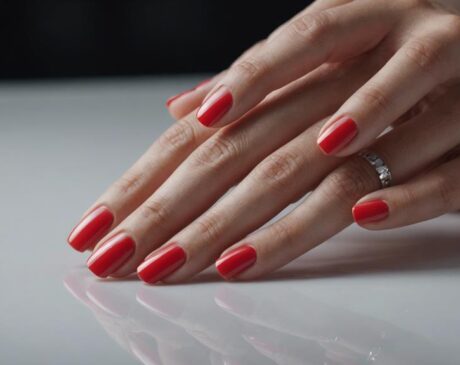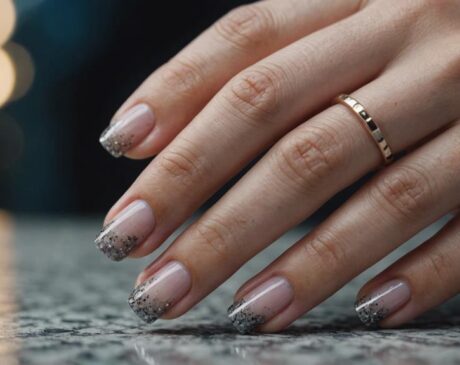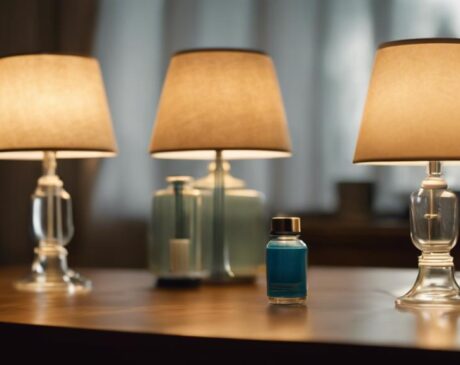Can you remove fake nails with hand sanitizer?

Safe removal of false nails is vital to maintaining the health and integrity of your natural nails. Incorrect removal techniques can lead to damage to the nail bed, infection, and weakened nails. Safe removal methods ensure that your natural nails remain strong, healthy, and free from unnecessary stress or trauma. Knowing the proper way to remove artificial nails can save you from a painful experience and long-term damage to your nail health.
Understanding Fake Nails
Types of Fake Nails
There are several types of fake nails, each with unique characteristics and uses. The most common types include:
Acrylic nails: a popular choice, they are made from a mixture of liquid monomers and powdered polymers that form a hard, protective layer over your natural nails.
Gel nails: they are made from a gel substance that hardens under UV light and are known for their shine and durability.
Press-on nails: these are pre-designed for immediate use and easy application, and can be simply adhered to your natural nails.
Powder dipped nails: this type involves dipping the nails into a colored powder and then sealing them with a clear protective polish.
How They Are Applied
The application of fake nails varies by type. Acrylic and gel nails involve applying a mixture or gel to the natural nail, molding it, and then hardening it. Press-on nails are glued directly to the natural nail, while dip-powder nails require multiple layers to be applied and sealed. Each method requires precision and care to ensure that the nails are evenly and firmly coated.
Hand Sanitizer as a Nail Remover
Ingredients in Hand Sanitizer
Hand sanitizers contain mainly alcohol, usually isopropyl alcohol or ethanol, which acts as a disinfectant. The high alcohol content in hand sanitizers, usually around 60-95%, effectively breaks down many substances, including certain types of adhesives.
Effects on Nail Glue
Alcohol in hand sanitizers can weaken the adhesion of nail adhesives, especially those used for press-on nails or certain types of nail glue. However, its effectiveness may vary depending on the type of adhesive used and the concentration of alcohol in the sanitizer.
Step-by-Step Guide to Removing Fake Nails with Hand Sanitizer
- Prepare your nails.
- Wash your hands thoroughly.
- Gently file off the top layer of the fake nail to break the seal of the top coat.
- Use hand sanitizer.
- Apply a generous amount of hand sanitizer to your nails.
- Let it sit for a few minutes to soften the adhesive.
- Gently remove the nail.
- Starting at the edges, use a wooden cuticle stick to gently push the fake nail away.
- If you feel resistance, apply more hand sanitizer and wait a few minutes.
- Aftercare for Natural Nails
- After removing your fake nails, wash your hands to remove any remaining sanitizer.
- Moisturize your nails and cuticles with an oil or moisturizer.
- Gently polish your nails if any rough spots are present.
Alternative Methods of Nail Removal
Commercial Nail Remover Products
Commercial nail removers are specially formulated to safely and effectively remove false nails. These products usually contain acetone, a strong solvent that breaks down nail adhesives. Acetone-based removers are particularly effective at removing acrylic and gel nails. Non-acetone nail removers can also be used and are gentler, but they may not be as effective on some types of false nails.
Natural Home Remedies
For those who prefer a more natural approach, some home remedies may be effective:
- Warm water soak: soaking your nails in warm soapy water for 20-30 minutes can help loosen some types of false nails.
- Oil soak: A mixture of oils such as olive oil and lemon juice can be used to soften the adhesive.
- Dental floss: This method involves gently sliding dental floss under the edge of the false nail and then slowly moving it back and forth to separate the nail.
Pros and Cons of Using Hand Sanitizer to Remove Nails
Pros:
- Availability: hand sanitizer is readily available and easy to use.
- Non-acetone based: it’s a good option for those who want to avoid acetone.
- Fast-acting: it works faster than some natural remedies.
Potential Risks and Drawbacks:
- Limited effectiveness: it may not work on all types of false nails, especially those that are firmly bonded.
- Skin irritation: prolonged exposure to alcohol can dry out and irritate the skin.
- Risk of nail damage: may damage natural nails if not used properly.
Expert Advice and Recommendations
Dermatologist’s Advice
Dermatologists usually advise against the use of harsh chemicals to remove nails and suggest gentler, more nail-friendly methods. They emphasize the importance of maintaining nail hydration and avoiding practices that weaken or damage natural nails.
Insights from Nail Technicians
Professional nail technicians often recommend using professional-grade products to remove nails. They emphasize proper technique and patience, especially when dealing with strong adhesives or durable nail types.
Real-Life Experiences and Testimonials
Success Stories:
Many people have successfully used alternative methods (such as hand sanitizers or natural remedies) to remove nails. These stories often emphasize the simplicity and convenience of these methods, especially when traditional products are not available.
Challenges Faced:
Conversely, there have been challenges and less successful attempts, especially when dealing with stubborn nail adhesives or experiencing skin irritation. These experiences emphasize the importance of choosing the right method for specific types of false nails and individual skin sensitivities.
While hand sanitizer is a convenient and easy-to-use tool for removing certain types of false nails, it is not a one-size-fits-all solution. Its effectiveness varies depending on the type of false nail and the adhesive used. Additionally, while it offers a quick and potentially less irritating alternative to acetone removers, it’s not without risks, such as the potential to irritate the skin and damage natural nails if used incorrectly.
As we’ve explored, there are several alternative nail removal methods, each with their pros and cons. It’s vital to protect your natural nails by choosing the right method for your specific type of fake nails and following safe practices. Expert advice from dermatologists and nail technicians emphasizes the importance of gentle removal techniques and proper follow-up care.
Ultimately, the health and safety of your natural nails should be the top priority. When in doubt, it is always a wise decision to consult a professional nail technician or dermatologist for personalized advice.
Frequently Asked Questions
- Is hand sanitizer effective in removing all types of false nails?
- Hand sanitizer is effective on some types of false nails, especially those with lighter adhesives, such as those pressed into the nail. However, it has limited effectiveness against the stronger adhesives used in acrylic or gel nails.
- Is it safe to use hand sanitizer on my nails regularly?
- Regular use of hand sanitizer on nails is not recommended. The high alcohol content can cause dryness and irritation of the skin and nail bed.
- What are the best follow-up care practices after removing false nails with hand sanitizer?
- After removing false nails, it is important to wash your hands to remove any residue, moisturize your nails and cuticles with a nourishing oil or cream, and give your natural nails some time to recover before applying a new false nail or nail treatment.
- How do hand sanitizers compare to traditional nail removal methods?
- Hand sanitizer is an easier-to-use but less specialized method than traditional nail removers like acetone. It is gentler than acetone but less effective against strong adhesives and not suitable for frequent use.
- Can I use hand sanitizer to remove nail adhesive residue?
- Hand sanitizer can help soften and remove some nail glue residue, but its effectiveness depends on the type of glue and the amount of residue. For stubborn residue, a specialized nail glue remover or acetone may be needed.




